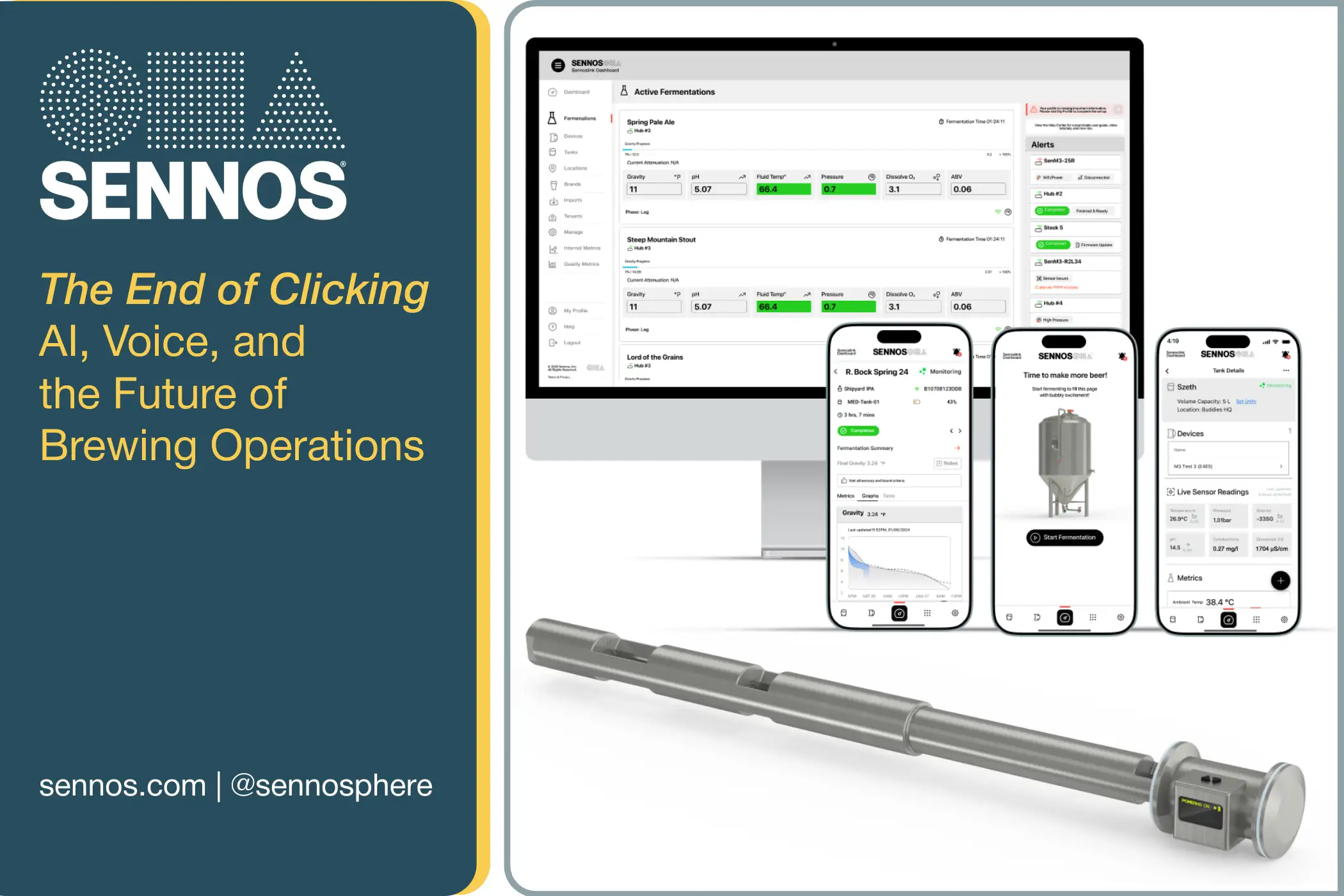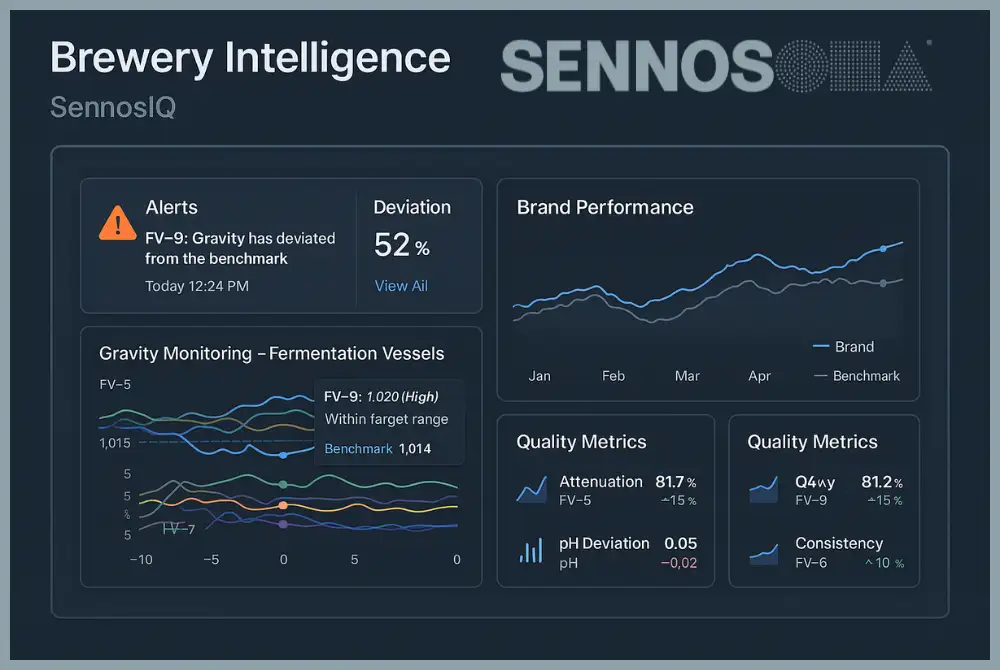
Brewing has always been a hands-on craft — a dance between heat, pressure, and precision. But for today’s brewers, managing tanks, temperatures, and timelines often means juggling digital tools in environments where keyboards and touchscreens just don’t fit. Wet floors, gloved hands, and constant motion make traditional data entry inefficient and error-prone.
Enter the next evolution of brewery technology: voice-to-text and voice-to-action systems powered by AI. These tools let brewers talk directly to their brewing software — issuing commands like “Start fermentation tracking” or “Log gravity for this tank” — while keeping both hands on the work that matters most. Combined with visual and contextual awareness, these systems don’t just listen — they understand what’s happening in the brewhouse and respond intelligently.
This isn’t just about convenience. It’s about safety, efficiency, and precision — turning everyday interactions into seamless, automated actions that help brewers focus on their craft instead of their keyboards.
Voice-to-Text and Voice-to-Action in Brewing
Breweries are challenging environments — wet floors, hot equipment, gloves, and constant movement — where typing, even on mobile devices, is inefficient and error-prone.
Voice recognition allows brewers to interact with systems hands-free, issuing commands like “Start fermentation tracking” or “Check this tank’s temperature.”
With visual and location awareness, the system understands context. When a brewer says “this tank,” it recognizes which one they mean based on proximity or camera input.
These interactions eliminate the need for manual typing or screen navigation, improving both safety and efficiency.
Voice-Activated Automation: The Brewer as the Human-in-the-Loop
Voice as the Trigger, AI as the Action: Brewers issue simple commands, and the AI executes them automatically — starting workflows, logging data, or adjusting controls.
Human in the Loop: Brewers stay in control. The AI confirms critical actions, surfaces alerts, and requests approval only when needed.
Real-Time Adjustments: If the system detects a temperature drift or other anomaly, it recommends corrective actions. The brewer approves or modifies the response via voice.
Context-Aware Execution: With visual and positional context, the AI understands which equipment or batch the brewer is referring to without extra input.
Automated Data Gathering and Reporting

Instead of typing notes or logs on a tablet, brewers can dictate entries like “Gravity 10-oh-two at 9 a.m.” The AI transcribes, timestamps, and links these notes to the correct tank or batch automatically.
If a data point is missing, the system prompts the brewer: “You haven’t logged the final temperature for Tank 2 — add it now?”
Combining voice, vision, and sensor data ensures every record is complete, accurate, and up to date.
GPT and AI Assistance for Task Automation
GPT-powered systems assist in drafting logs, shift notes, or reports — predicting and formatting common phrases automatically.
Brewers can say, “Add that to today’s fermentation log,” and the system formats and files it instantly in the right place.
Over time, the AI learns each brewer’s patterns and preferences, making documentation faster and more intuitive.
This reduces repetitive administrative work and creates a more natural interaction with brewing systems.
Seamless Interaction Beyond the Keyboard
Modern AI systems combine voice, vision, and sensor data to interpret brewer intent across multiple inputs.
Brewers can interact however is most natural — speaking, gesturing, or showing equipment to the system.
Embedded voice assistants in control panels or mobile devices respond contextually: “Adjust fermentation temperature here” or “Show yeast health for this batch.”
The result is a brewing system that feels intelligent, responsive, and nearly invisible in day-to-day operations.
Why This is Helpful for Brewers

Hands-Free Operation: Voice and vision remove the need for keyboards or touchscreens in hot, wet, or high-mobility environments.
Efficiency and Focus: Brewers spend less time entering data and more time brewing, adjusting, and refining their craft.
Improved Accuracy and Consistency: Context-aware automation ensures no steps are missed, reducing human error and improving batch repeatability.
Better Data, Better Brewing: Clean, real-time data supports smarter analysis, predictive insights, and continuous improvement
About Partner Provided Content



